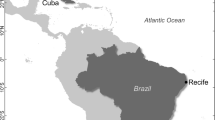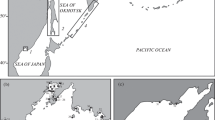Abstract
Tubificoides benedii is regularly found in sulphide-rich sediments with extremely low oxygen tensions and can tolerate anaerobic conditions for several days. Although the anaerobic energy production of marine invertebrates has been well studied, almost nothing is known about the anaerobic metabolism of marine oligochaetes. Preliminary results after measuring end-products during anaerobic incubation show that in contrast to all previously examined marine facultative anaerobe invertebrates T. benedii degrades malate during anaerobiosis. Also, the concentration of free amino acids is extremely low for a marine organism. Low levels of free amino acids could be concomitant with malate utilization: the utilization of the amino acid aspartate (as observed in all other examined marine invertebrates) seems to be excluded by the low concentrations of aspartate and other amino acids in T. benedii.
The physiological lab studies were supplemented by ecological investigations in the field and laboratory on the vertical distribution of T. benedii. 90% of the population was always found within the first few cm below the sediment surface. Aquarium observations showed that the posterior end of the worm projects above the sediment surface, where it slowly waves back and forth. This behavior points towards an intestinal respiration. The described orientation, an intestinal respiration and anaerobic energy production could be advantageous in sulphide-rich sediments where O2 only penetrates a few mm into the sediment. The worm can easily inhabit the first three to four cm by holding its tail in the upper oxygenated sediment and water. Here it would be able to feed on the rich quantities of bacteria at the anoxic-oxic interface and yet still keep up an aerobic metabolism. In addition, its ability to produce energy anaerobically would allow T. benedii to dwell in deeper anoxic sediments for limited periods of time or to survive complete O2 absence that could develop during low tide.
The posterior ends of T. benedii found in a sulphide-rich habitat in the German Wadden Sea were covered with filamentous epibacteria (Dubilier, 1986). Electron microscopy showed that the bacteria were anchored in the cuticle. The association is apparently not pathogenic whereas positive forms of interaction can be envisioned.
Similar content being viewed by others
Reference
Dubilier, N., 1986. Association of filamentous epibacteria with Tubificoides benedii (Oligochaeta, Annelida). Marine Biology 92: 285–288.
Author information
Authors and Affiliations
Rights and permissions
About this article
Cite this article
Dubilier, N. Some aspects of the ecophysiology of Tubificoides benedii and ultrastructural observations on endocuticular bacteria. Hydrobiologia 155, 161 (1987). https://doi.org/10.1007/BF00025644
Issue Date:
DOI: https://doi.org/10.1007/BF00025644




